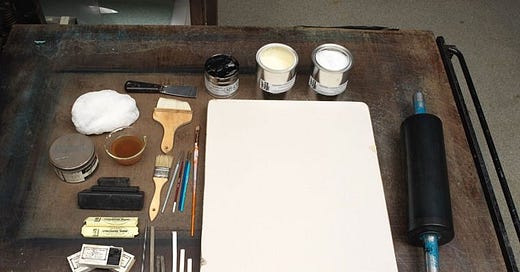Both colored lithographs and colored engravings are forms of printmaking techniques used to create multiple copies of an artwork. While they may appear similar at first glance due to their colored nature, they involve different processes and materials:
Process: Lithography is a planographic printing technique, which means the printing surface is flat and smooth. The image is drawn on a special type of limestone or a metal plate with a greasy crayon or ink. The stone or plate is chemically treated, so the greasy image areas attract ink, while non-image areas repel ink.
Printing: The stone or plate is dampened before ink is applied, and the ink adheres only to the greasy image areas. The image is then transferred onto paper through a printing press.
Appearance: Colored lithographs often have a smooth and even texture with a wide range of colors and tonal gradations. They may have a painterly quality and can resemble watercolor or oil paintings.
Process: Engraving is an intaglio printing technique. The image is incised or engraved into a metal plate (usually copper) using sharp tools or acid. The engraved lines create recessed areas in the plate that hold the ink.
Printing: Ink is applied to the engraved plate, and then the surface is wiped clean, leaving ink only in the engraved lines. The paper is pressed onto the plate under high pressure, forcing the paper into the inked lines to pick up the image.
Appearance: Colored engravings typically have a more precise and intricate line quality due to the engraving process. The color application is often more controlled and less painterly than in lithographs.
In summary, the main difference between a colored lithograph and a colored engraving lies in the printing techniques used and the visual characteristics they produce. Lithographs have a smoother and more painterly appearance, while engravings have a more detailed and precise line quality.





